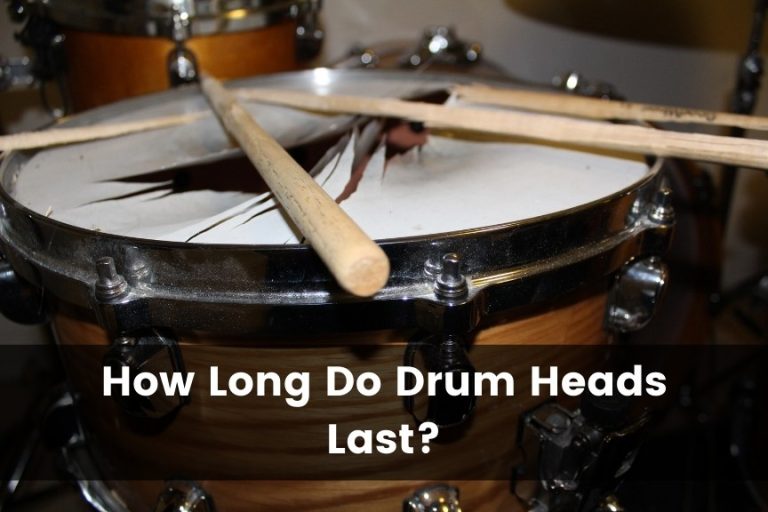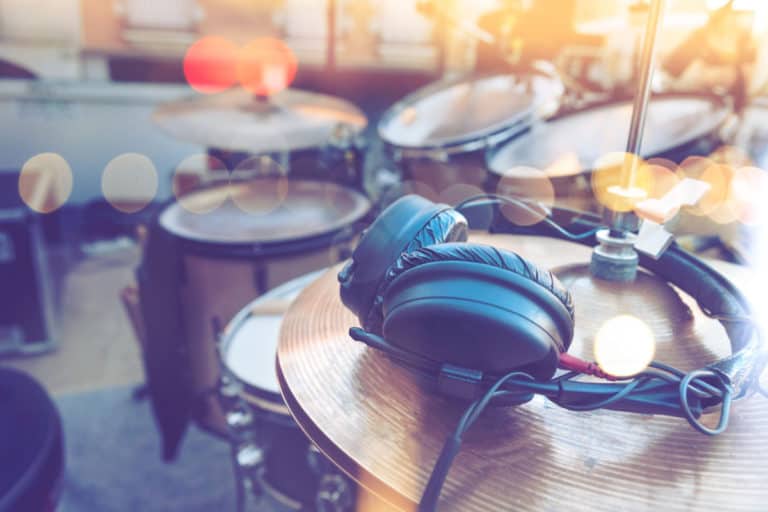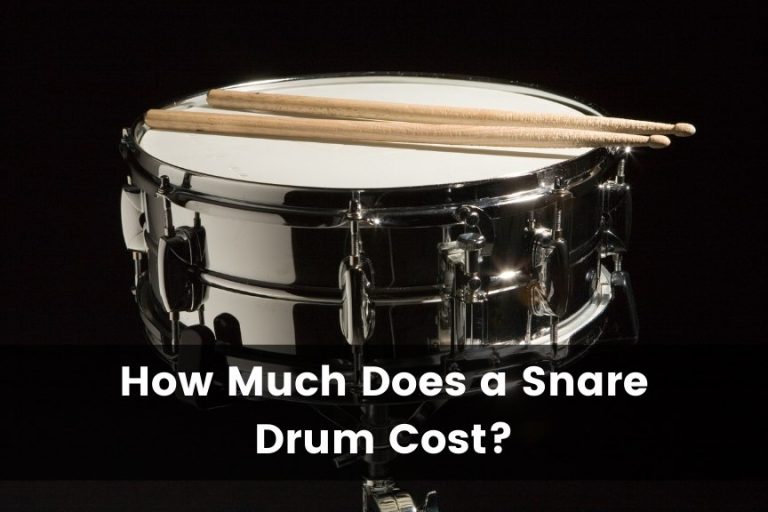Can I Store My Drums in the Heat? (With 9 Practical Tips)
With rising temperatures in the summer months, numerous situations occur in which you will have your drums exposed to the heat.
Exposing your drums to extreme heat can potentially harm the drumset. Quick and severe changes in temperature or humidity are a big problem. Usually, small environmental changes will be fine. Try to avoid direct sunlight and keep your drums at a comfortable temperature.
When leaving the drumset in the heat, you’re rolling the dice. Every piece of wood is different, the ways of gluing the plies and using wraps differ. These are variables that all have different temperature characteristics.
Effects of Exposure to Heat
It is much more complicated than just heat/cold or humid/dry. All of those four things get involved and can mess up your drum kit.
The Wood & Glue
A plain fact is that extreme changes in temperature and humidity, mainly when combined, are harmful to wood. The number one issue is that it will cause your finish to ruin and worst case to warp your drums. Although older drums can “get off scot-free” by decades of conditioning, these kinds of extremes are better to be avoided. Depending on the construction of the drum, different shell constructions will also respond differently. In theory, layered shells resist damage better than other shell types.
Furthermore, you will have to deal with glue, which will become soft or even liquefies under this type of heat, varying according to the category. Perhaps you have varnish, which, according to your model, can do all kinds of nasty things under heat. Placing them against the wood, you have a formula for disaster. The stretching of wood and the softened glue then leads to delamination. The plastic wrap will crumple, steam up, and come off eventually.
Just so you think about it, if you want to ” unglue” something, you use a heat gun to melt the glue. Now, when this happens, things that were once glued will come off. Therefore, in a hot situation, the adhesive will detach and might even start to bubble (happened to me once while playing in the sun at about 90°F / 32°C heat). Under hotter conditions, the glue between the plies of the drums possibly melts – not good.
Also, a huge issue, according to my honest view, is humidity, which is tightly connected to temperature. At the bottom line, water is terrible for drums (unless they are made of carbon fiber or acrylic or something). When you understand these facts, then you’ll be fine: High temperatures tend to allow for higher humidity, while cold temperatures generally tend to be drier. This means that when it’s 90°F / 32°C outside, there is most likely more moisture to be found in the air than at 40°F / 4°C.
The Drumheads
As mentioned above, high temperatures cause the wood to warp, which leads to the deformation of the drumheads, which in turn has drastic impacts on the sound.
Because heat makes wood expand, it stretches the heads. When you are lucky, and the wood goes back to normal, the heads remain stretched out, thus dropping the pitch. In extreme cases, the drums sound rather dead.
The Hardware
As far as hardware is concerned, you only run the risk of rust. A little corrosion will usually not harm the hardware much.
Practical Scenarios
In practice, you may keep the drums in the car and park the car longer and expose it to the sun. Never place the drums in direct sunlight. The windows of the vehicle intensify the sunlight like a greenhouse. Putting a drum kit in a heated car is the same as saying, “OK, I’m going to destroy my drum kit now”.
Another practical scenario could be if you wanted to store your drums in the attic. During warm summer months, it can definitely get very hot in there, too.
For the most part, your kit will have little trouble getting used to the temperature or humidity in a room. However, the big problem is when things change dramatically and quickly.
What About Electronic Drum Kits?
Most consumer electronics devices have been designed for use in a temperature range of 0-70°C / 32-158°F. This will only be a problem if there are rapid changes in humidity or if the equipment is permanently exposed to high levels of moisture. I don’t imagine I would be as concerned about the module as I am about the pads themselves.
Roland themselves haven’t published hard numbers for a suitable operating environment in their manuals. All they say is to never use or store the unit in places that are:
- Subject to temperature extremes (e.g., direct sunlight in an enclosed vehicle, near a heating duct, on top of heat-generating equipment); or are
- Damp (e.g., baths, washrooms, on wet floors); or are
- Humid; or are
- Exposed to rain; or are
- Dusty; or are
- Subject to high levels of vibration.
Ideal Storage Temperature
Drum manufacturer DW stated the following in their drum F.A.Q.:
“A general consensus among drum manufacturers has been that drums are safe and comfortable when they are stored in an environment in which you are comfortable in.”
In a closed car, after 1 hour at 85°F / 29°C heat, the temperature will likely exceed 130°F / 54°C. That’s pretty uncomfortable.
Now What?
My Advice & Examples
Here is my advice when you don’t have a well-temperated room available to store your drums.
- Storing in the car: Put sun shades in the front and rear windows and park the car in a secure parking garage or in the shade with the windows or sunroof cracked.
- Put the drums in bags or cases.
- Cover the drums with dense fabric like blankets.
- Playing in the sun: Try to keep your kit in the shade and cover it when not playing.
- Use a dehumidifier to keep your practice space (not climate-controlled) to around 50-55% humidity.
- If you live in dry conditions (central heating or desert), add some humidity to the air.
- Rent a kit for a distant gig before risking heat exposure.
- Look for a trusted friend or family member that will let you store your kit at their place.
- The drums could be placed around the house and used as furniture (e.g., a lampstand, a basket to store the blankets for the couch, decoration on a bookshelf (for smaller toms)). Do whatever you need to do in order to prevent them from the weather and still get them out of the way!
Note: Drums in good cases will do better as the casing slows down the pace of change & provides good protection against significant humidity changes. But also watch out with drum cases as they are not a guaranteed protection against heat. After some time, they too reach their limits.
After getting your drums out of the hot place, don’t re-tune until after they cooled down! The wood needs to slowly re-adjust to the new temperature again.
I Left My Kit in the Heat – HELP!
Hold on for a second before you think it’s over. Take a breath and evaluate the situation:
What’s the value of the drums, and do you love those drums? If they’re valuable and you want to play them again, with as minimal changes as possible, put them in a well-climatized room and let them re-adjust to the temperature. Observe how the shells, glue, and drumheads are doing. Is there anything that is coming off, are the shells looking good and with the drumheads sounding fine?
Examine how bad it is. If only the drumheads sound a little deeper, you can tighten the lugs and adjust the pitch. In extreme cases, the drumheads are so warped that even tightening the lugs will not make the sound any better. You will have to buy a new set of heads.
If it’s really worse, it depends how valuable the set is to you. You can take it to a well-trusted drum shop and let them see what can be repaired. Otherwise, I’d sell it and maybe wait until you have the room and time and buy again in the future.







